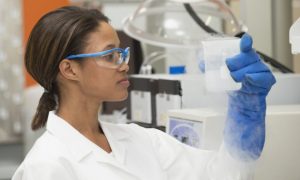Dr Jane Cooke Wright is a Physician, cancer researcher and first Black woman elected president of the New York Cancer Society. She was born in Manhattan in 1919 to a distinguished African-American family. She obtained an art degree from Smith College in 1942 and three years later obtained a medical degree, graduating with honors, from the New York Medical College.
In 1964, working as part of a team at the N.Y.U. School of Medicine, Dr. Wright developed a nonsurgical method, using a catheter system, to deliver heavy doses of anticancer drugs to previously hard-to-reach tumor areas in the kidneys, spleen and elsewhere. She was the only woman, and only Black person, among the seven researchers who founded the American Society of Clinical Oncology (ASCO) and later became head of the chemotherapy department and associate dean at New York Medical College. It was the first time a black woman had held such a senior position in a medical school.
Dr Wright worked alongside her father, Dr Louis T. Wright, who was one of the first Black students to earn an M.D. from Harvard Medical school and the first African-American doctor appointed to a public hospital in New York City. Together at the Cancer Research Foundation at Harlem hospital, “The Wrights were one of the first groups to report the use of nitrogen-mustard agents as a treatment for cancer, which led to remissions in patients with sarcoma, Hodgkin’s disease, chronic myelogenous leukemia, and lymphoma. The Wrights were also some of the first researchers to test folic acid antagonists as cancer treatments. ”
After her father died in 1952, Dr Wright took over as Director. The American Association for Cancer Research writes:
“She was among the first researchers to test chemotherapeutic drugs in humans, which produced effective dosing levels and helped saved lives. Dr. Wright began her pioneering work in 1949, and during her 40-year career she published over 100 research papers on cancer chemotherapy and led delegations of cancer researchers to Africa, China, Eastern Europe, and the Soviet Union. By 1967, she was the highest ranking African-American woman in a United States medical institution. In 1971, she became the first woman elected president of the New York Cancer Society.”
Dr Sandra Swain, 2013 president of ASCO, said of Dr Wright:
“Not only was her work scientific, but it was visionary for the whole science of oncology. She was part of the group that first realised we needed a separate organisation to deal with the providers who care for cancer patients. But beyond that, it’s amazing to me that a Black woman, in her day and age, was able to do what she did.”
Credit: stemwomen.net



